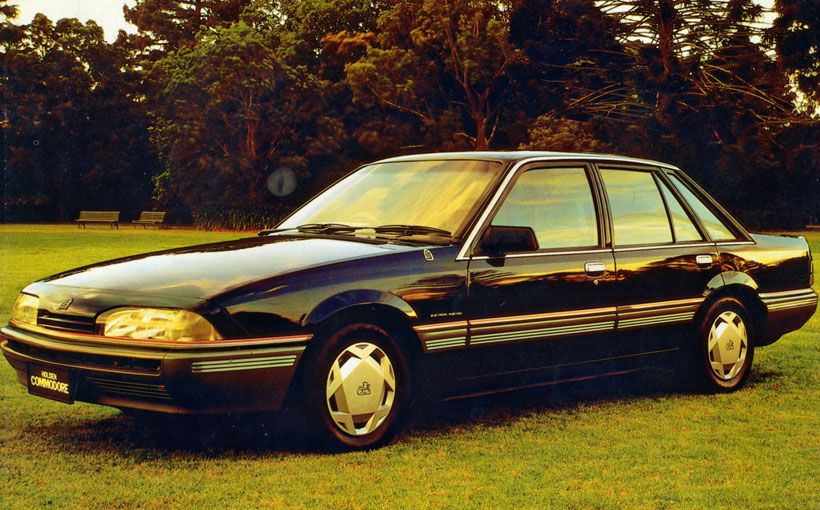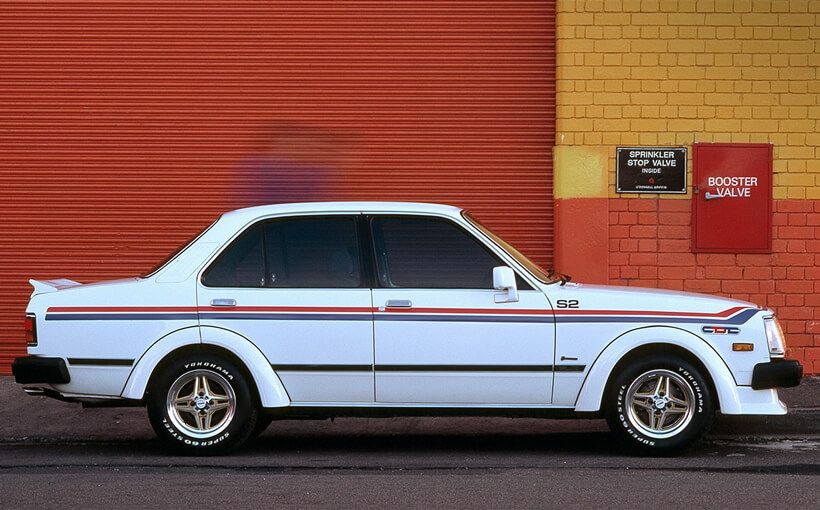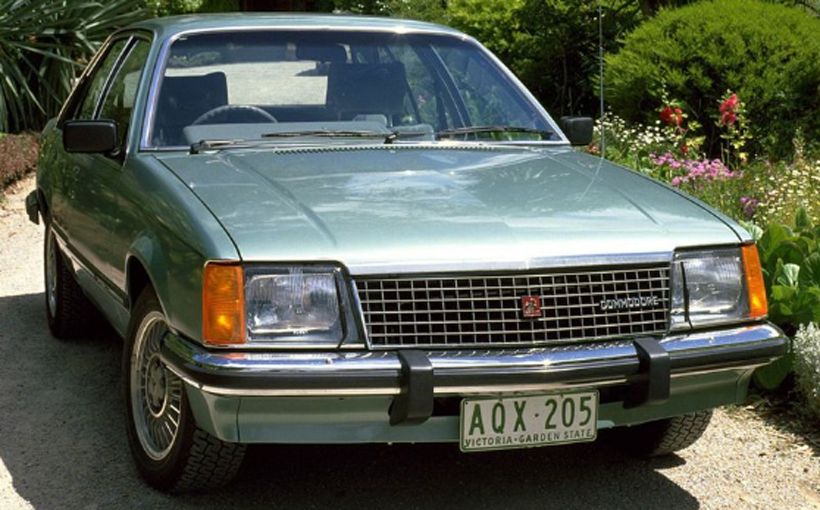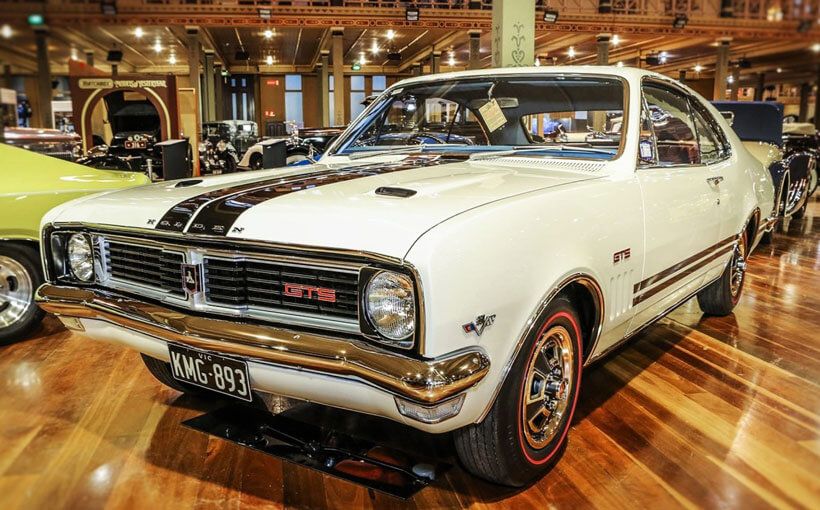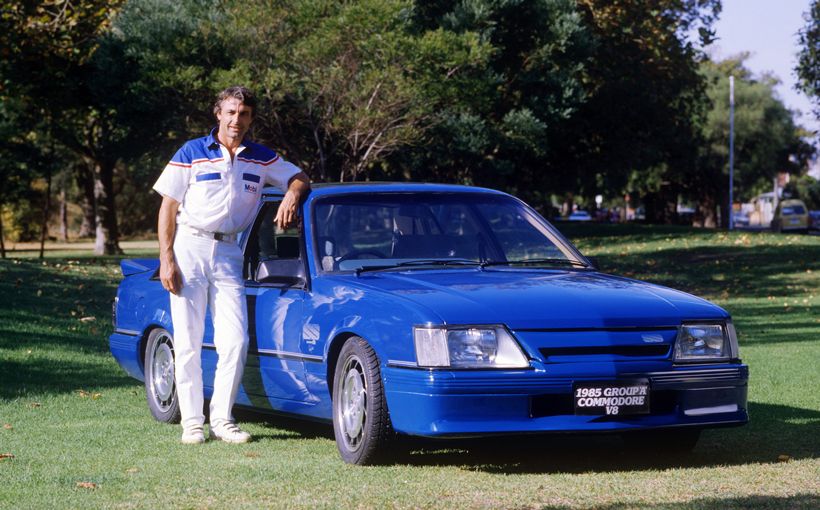Holden VL Commodore: A Very Late Maturing

The VL, which made its debut in February 1986, was the last of the compact, relatively narrow Commodores. Holden’s designers had made a significant change with the VK two years earlier by adding two extra rear side windows. But a bigger glasshouse only went so far towards alleviating customer perceptions that the Holden was too small inside, compared with the Falcon and even the clever new Mitsubishi Magna.
Holden was stuck with the existing platform until 1988 but had given it a major mechanical revamp. Finally, the dear old red Holden sixes had been consigned to the past, their place beneath the bonnet taken by a fantastic new single overhead camshaft straight six produced by Nissan destined to power a new Skyline, still some months from being launched locally.

Superbly smooth, impressively powerful and very fuel-efficient, this 3.0-litre engine was far more advanced than any previous Holden six. Not that it was – strictly speaking – a ‘Holden’ six at all. Arguably some diehard fans may have been dismayed at the use of a Japanese engine in what they probably still thought of as Australia’s Own, but senior executives at Nissan Australia were more than dismayed by the way the new engine was promoted in Commodore advertising; it looked as if Holden was taking the credit for its engineering. Nissan Australia’s response was to run large advertisements which effectively said; ‘If you think our 3-litre six-cylinder engine does wonders for the Holden Commodore, just wait until you drive the car for which it was designed!’ Nissan’s equally brilliant four-speed electronic automatic transmission was also a huge improvement over the outgoing Tri-Matic.

So it was that in early 1986 the Commodore got an overhead camshaft and a four-speed auto, neither of which items was destined to appear in Falcon for two years. And six months or so later there would also be a turbocharged version of this engine, which was for the exclusive use of Holden. Imagine how upset the Nissan team must have been not to be allowed to produce a Skyline Turbo.
Buyers who wanted a manual transmission got a Holden five-speeder which was much better than the old four-speed unit fitted to early Commodores. In summary, then, the Holden engineers gave the car a major rework to improve it in most mechanical aspects. Unfortunately, results were mixed. Constant fiddling with suspension settings had almost removed the roll steer that had plagued earlier models, but purists felt the handling of the VL was not as sharp, that there was excessive understeer and that the standard car basically felt too soft. Holden offered a new FE2 sports suspension which improved handling considerably but with a ride comfort trade-off. This upgrade was standard on all the sports versions (including the two very different SS Group A Commodores where it was further revised with modified strut mountings, Bilstein dampers and more).
Even the standard suspension wasn’t the worst thing about the VL. The build quality and finish were poor. I think it was in early 1987 that Holden invited journalist Phil Scott and me to fly down to Melbourne and go through the company’s quality audit, comparing a recently built VL with a Magna, a Skyline and a Falcon. On their scoring, the Commodore was now about equal with any of these and better than one or two. But it depends which questions you ask, how the scoring turns out. There was, I noted, no question relating to paint lustre, meaning no points could be lost on this aspect. The VL’s paint had grit in it and looked very flat. Certainly the engineers were trying hard to improve quality but they still had a way to go. Panel fit, paintwork and general finish remained no better than mediocre.

These were troubled times for GM-H. Manufacture of the WB Statesman/Caprice had finished. There were no VL utilities or panel vans. And the Commodore wagon shared its wheelbase with the sedan, meaning it was a much shorter vehicle than its Falcon rival. Remarkably, a decade earlier when the XC Falcon hit the showrooms, Ford Australia produced its Falcon-based vehicles on three different wheelbases, while Holden had two. With XD, the LTD lost its longer wheelbase, but there was still an amazing variety of body styles. When GM-H placed its dependence on the Commodore as opposed to vehicles engineered from the beginning in Australia, it lost some of that marvellous scope; it would have been prohibitively expensive to engineer ute and panel van versions, while the Commodore body was too narrow to support a stretch in the wheelbase.

Behind the scenes, GM-H was fighting for corporate survival. So the VL range had its work cut out. With VK the old ‘SL’ and SL/E’ gave way to model names and the premium Calais did present as a vehicle with a more luxurious, upmarket ambience than its Fairmont Ghia rival.

With VL, the styling changes were almost as major as those of the VK. This time around – perhaps in part because of the demise of the long-wheelbase Statesman and Caprice – the Calais got a unique nose-cone. It had semi-retracting covers over the headlights and its own clear plastic eggcrate pattern grille. Undoubtedly, the new headlight treatment gave the Calais a newfound sleekness, while rendering it immediately distinguishable from the cheaper variants. Had Holden’s marketing team had its way, we journalists would have regarded the Calais as a separate model, not really a ‘Commodore’ at all!
When the turbocharged engine option arrived later in the year, the Calais Turbo was clearly a more desirable car than any Fairmont Ghia, which offered no turbo and had not even been available with a V8 engine since early 1983, the new EFI 4.1-litre six supposedly replacing both the 4.9-litre and 5.8-litre V8s – in the marketing dudes’ dreams! The EFI six made 121 kW, while the Commodore/Calais Turbo delivered 150.
There was no V8 on offer when the VL was launched, but Holden’s marketing people knew that some buyers demanded such a unit for towing. In October 1986 GM-H launched an unleaded edition of its 5.0-litre V8 engine driving through the old three-speed Tri-Matic. No question, on engines the Commodore outscored the Falcon which had just the carburetted 3.3- and 4.1-litre sixes and the 4.1 EFI.

Rumours of a fancy new electronically injected V8 were not true, but even the press function to launch the V8 engine was clever, with journalists getting to tow quite substantial rigs up the Bulli Pass. Performance buyers could have the turbocharged six, while those who wanted to tow a boat or caravan could choose the 122 kW V8 for its excellent torque (323 Nm at 3,200 rpm). Advertisements for the Commodore V8 – one catchline was ‘Only Holden torques your language’ – were brilliant, with one showing the car towing an America’s Cup yacht, another a Jumbo jet!
As for the turbocharged version of the Nissan 3.0-litre six, arguably GM-H squandered a marketing opportunity by not creating a new hero car to showcase this brilliant engine. It was offered as an option across the range. Larger brakes (beneath 15-inch wheels with 205/65 rubber) were wisely made mandatory if you wanted forced induction. The Girlock finned alloy front callipers were the same as those shipped to the US for the Corvette.
New pistons lowered the compression ratio from 9:1 to 7.8:1 and a different camshaft was fitted to reduce overlap. The Garrett turbocharger was installed inside a water-cooled housing.

Why take photographs of a brand new car being driven on the beach?
The NSW Highway Patrol bought some VL Turbos and were very impressed with its performance. But back in VH/VK days, one officer I spoke to said he and his colleagues preferred the Falcon’s high speed handling. The Falcon though, despite shortcomings such as the huge turning circle and lack of a serious high performance engine, continued to outsell the Commodore. That was because 70 per cent of all Falcons were sold into fleets. Ford Australia’s marketing executives did go to great lengths though to keep the XF competitive with all models getting power steering, four-wheel disc brakes and colour-keyed bumpers, all of which doubtless made those who got a Falcon company car happy with their lot. Private buyers continued to prefer the Commodore but there just weren’t enough of them.

Nevertheless, the VL was the best-selling of the compact Commodores, notching up a total of 151,801 in about 30 months; by contrast, the VB ran to 95,906, the VC to 121,807, the VH managed 141,018 and the VK 135,705. Two low-volume VL variants were the Calais wagon (which, like the XF Fairmont Ghia wagon, proved there was little demand for a luxo load-hauler, at least from the local manufacturers) and the first of the VL SS Group As, the one painted Permanent Red. Despite being built in Peter Brock’s HDT workshops, the famous signature was not applied to many of the cars because GM-H refused to endorse Brock’s so-called Energy Polariser. (Brock allowed his signature to be applied to ‘Plus-Pack’ Group As, identical in all other respects but equipped with the device.)

The first VL Group A used a Rochester four-barrel carburettor, while the more famous HSV Group A had throttle body fuel-injection. It also weighed a remarkable 130 kg more at 1470 kg with the complex bodykit accounting for at least 65 of them. There is no room here to relate the whole sorry story but between the launch of the Permanent Red car and its successor, popularly known as the ‘Walkinshaw’, Holden had severed its ties with Peter Brock and contracted the TWR Group to: (a) produce and market specially modified vehicles, (b) provide an additional engineering base and (c) undertake motor racing with these specially modified Holdens. The contract was signed on 15 October 1987. By the time the Panorama Silver Group A was ready for sale in March 1988, the VL itself was getting very long in the tooth. There was an initial batch of 500 cars, but then – unwisely, as it soon turned out – Holden’s marketing team decided to offer another batch of 250. The all-new VN Commodore went on sale before all these cars had found customers and many lingered in showrooms until well into 1989, doing great damage to resale values and encouraging use of the unkind nickname ‘Plastic Pig’.

Later the HSV Commodore achieved lasting recognition as a great Aussie classic and it was undoubtedly far more thoroughly developed than any of its HDT predecessors.
It was, for example, wind tunnel tested in the UK and proved to be at least 25 per cent more aerodynamically efficient than its red predecessor. The increased positive downforce and extra weight made this car far more stable at speed.
In summary, it was the VL that realised the potential inherent in the compact Commodore from the start. No question, it was the standout of the five compact models. Its Nissan-sourced 3.0-litre sixpack and four-speed electronic automatic transmission gave it a marked superiority to the XF Falcon sixes. The Calais Turbo was a cracker sedan by any standards. And the brilliantly original HSV Group A will forever stand as the greatest Commodore achievement of the first decade.


